Kia Seltos facelift review: Small changes add up
More feature-rich and premium than before, the Seltos facelift moves the midsize SUV game forward.
Published on Jul 23, 2023 10:00:00 AM
46,392 Views
Follow us on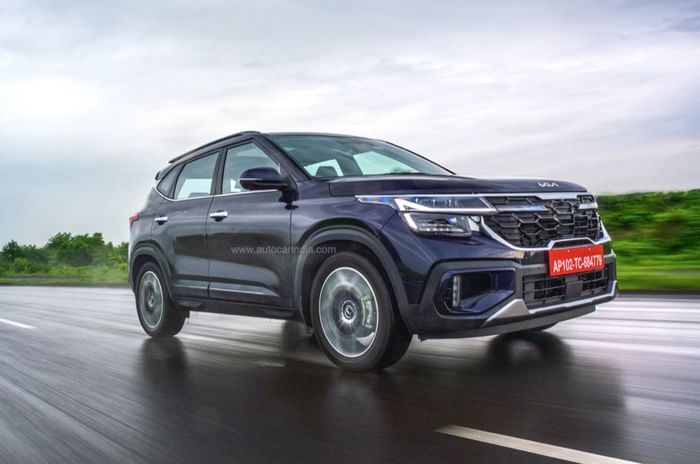
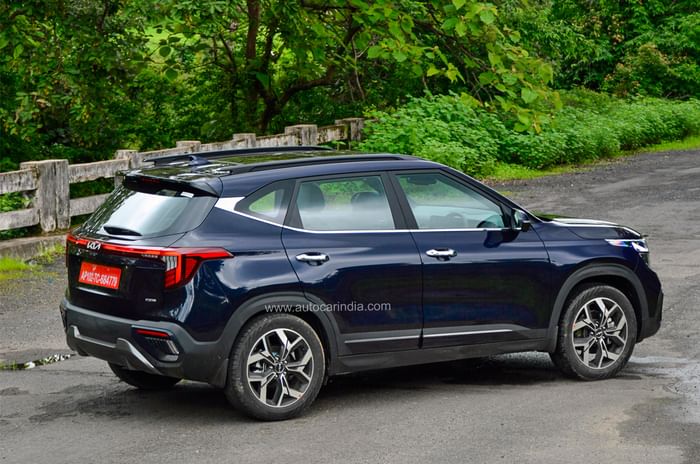
GT Line and X-Line variants of the Seltos come with 18-inch alloys.
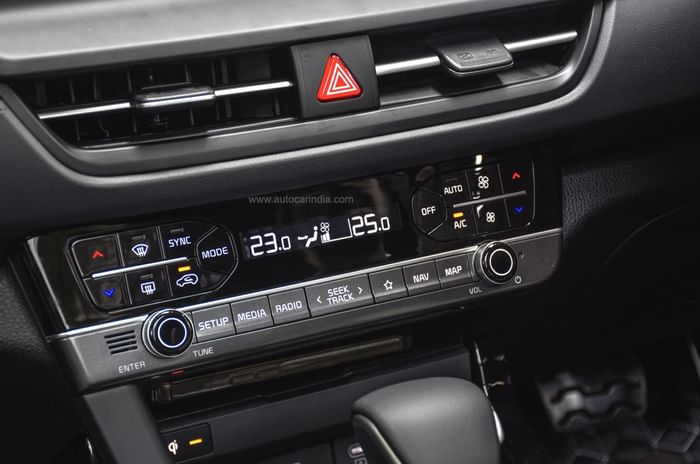
Dual-zone climate control is a segment first feature.
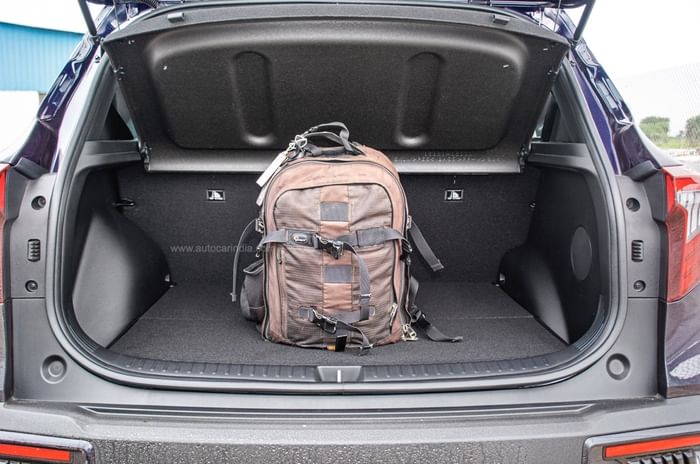
The luggage capacity remains 433 litres.
We Like
- Refined powertrains
- Packed with features
- Premium cabin
We Don't Like
- Huge variant line-up is confusing
- Top-end models are pricey
The Seltos began Kia’s Indian innings back in 2019, and it’s been a sales sensation ever since, having gone home to over 5 lakh buyers. Since then, though, newer rivals have raised the bar further with more features, tech and hybrid powertrains. Now, in a bid to push the Seltos back to the top of the segment, Kia has updated the SUV. Initially, it might seem that the changes are subtle, but there’s a bit more to the Seltos facelift than meets the eye.
Kia Seltos facelift exterior
It’s fair to say that the changes on the outside are evolutionary rather than revolutionary, but that’s not a bad thing as the Seltos was a handsome SUV to begin with. The subtle updates only make it look more contemporary now. Compared to the outgoing model, the new Seltos gets a larger iteration of Kia’s ‘tiger nose’ front grille, a new bumper, tweaked headlights, a new LED Daytime Running Lamp signature that still extends into the grille, but is now lower, and a four-block pattern for the fog lamps instead of the three before.
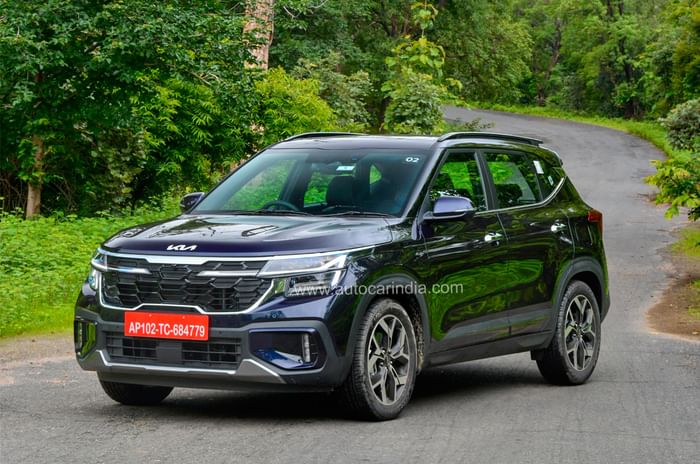
Along the sides, the changes are much more subtle. The GT Line variants we drove get the same 18-inch alloys as the pre-facelift X-Line and body-coloured detailing on the black plastic cladding lower down on the doors. From the rear is where it’s most apparent that this is the facelifted Seltos. The SUV now gets a connected light bar – replacing the chrome strip – that spans the width of the tailgate, which is flanked by vertical tail-lights. The bumper is all new too and now houses the reversing lights along with body-coloured inserts. Sequential turn signals are part of the package and there’s a new ‘Pewter Olive’ paint shade on offer too.
| Kia Seltos Price, Mileage, Specifications, Features and Variants | |
|---|---|
| Brand | Kia |
| Model Name | Seltos |
| Kia Seltos Price | ₹ 13.00 - 24.35 lakh |
| Kia Seltos Range/Mileage | Petrol : 17 - 17.9kpl | Diesel : 19.1kpl |
| Kia Seltos Specifications | SUV | 5 doors | 5 seats View All Specs |
| Kia Seltos Features | LED headlight | 10.25-inch Touchscreen display | 6 airbags View All Features |
| Kia Seltos Variants | Petrol HTE (O) MT | Petrol HTK MT | Diesel HTE (O) MT View All Variants |
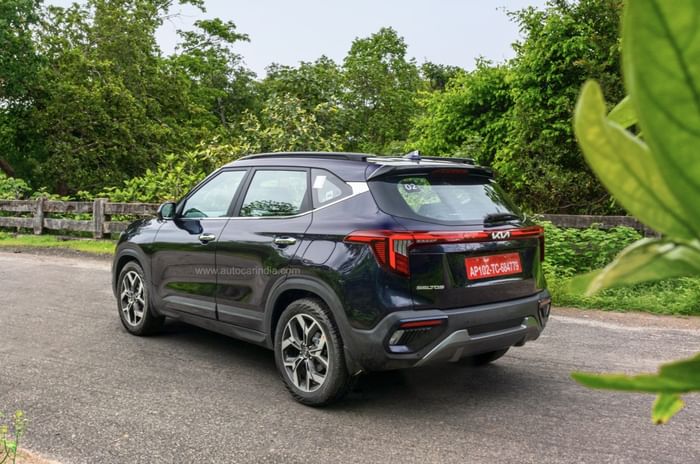
Also worth noting, the Seltos comes in three distinct variant lines like before – Tech Line, GT Line and X Line. The higher-spec GT Line and X Line get a slightly different body kit compared to the Tech Line. Differences include the front grille inserts, bumpers, body-coloured inserts in the bumpers, skid plates and larger 18-inch alloys. Furthermore, the turbo-petrol versions also get twin exhaust tips, to mark it out as the more performance-oriented Seltos. Interestingly, the GT Line also loses out on the red detailing that was offered earlier, and in my eyes, it’s better for it. Overall, the Seltos continues to have a decent road presence, but now it looks more upmarket than before.
Kia Seltos facelift interior
Step inside the facelifted Seltos and your attention is immediately drawn to the curved, dual-screen setup for the dials and infotainment. Not only does it look cleaner than the older setup but it also doesn’t have a binnacle over the cluster, which aids visibility out of the cabin, especially for shorter drivers. The 10.25-inch screens themselves are high in resolution, quick to respond and have bright colours. What’s also nice is that despite it being digital, the cluster retains the analogue-looking dials, which just look nicer than a full-digital readout. There’s also a different font and design depending on which drive mode you’re in.
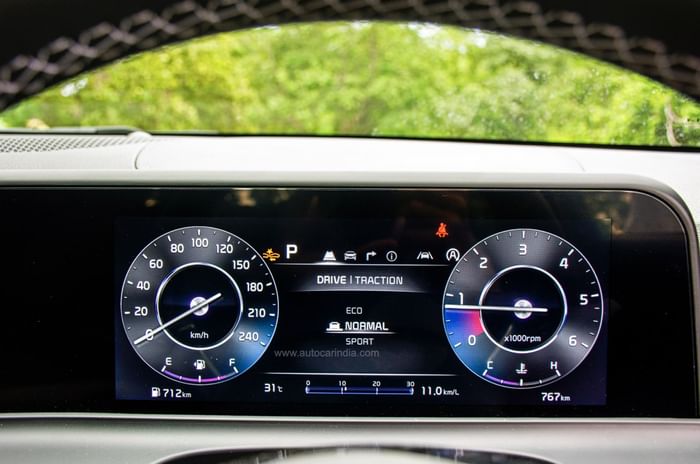
The touchscreen is also one of the slickest in the segment and it brings wireless Android Auto and Apple CarPlay, Hinglish voice commands and is capable of OTA updates. It also continues to offer a split-screen layout, which means you can access two functions at the same time, like music and navigation, for example. The steering is also largely similar to the pre-facelift model save for the new buttons for the ADAS controls on the right.
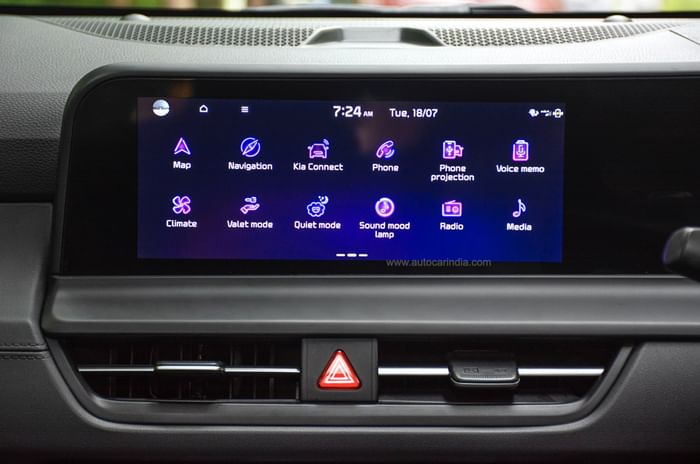
The dashboard itself looks a lot cleaner now, thanks in part to the new screen setup, with slimmer AC vents and the bundled HVAC and audio controls positioned below them. Kia has also paid attention to detail as some of the smaller controls, like the rotary dials for the audio and the switches on the steering feel really high quality. The upholstery has been updated as well, with the GT Line variants getting an all-black theme with white inserts, stitching and GT line logos. Personally, I quite liked the red detailing of the older car here, but this is perhaps a more neutral choice and one that’ll appeal to a wider audience. And while the black upholstery does rob you of the sense of space, what helps alleviate that is the large panoramic sunroof.
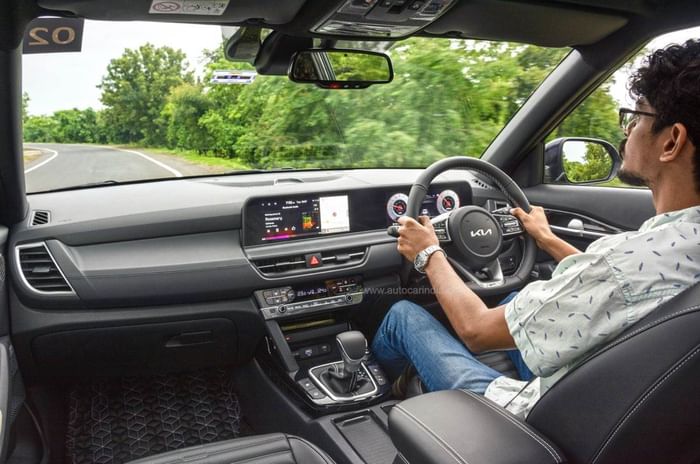
The front seats are well-cushioned, supportive and will accommodate even larger-sized people. There’s also enough adjustability in the seat and the steering to find your ideal driving position. Space in the back is ample too, with enough headroom and kneeroom for even taller passengers; the Seltos will also seat three adults here with relative ease. Rear seat passengers are also well catered to as you continue to get rear AC vents, retractable window blinds and a reclining rear backrest. The new things here are the type-C charging ports and an updated air purifier above the AC vents that can now be controlled with touch capacitive buttons instead of a sub-menu in the infotainment. What’s also nice is that all windows now have a one-touch up/down operation. At 433 litres though, the boot space remains the same as before.
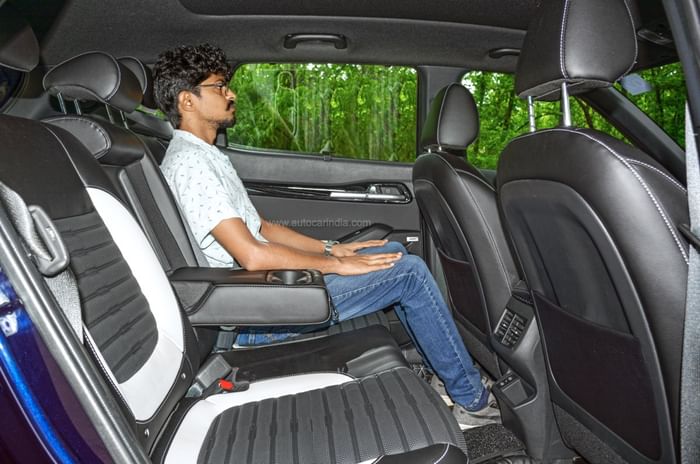
Like the older car, the different variant lines get different interior schemes. Along with the aforementioned black and white scheme on the GT Line, the top-spec X-Line gets an all-black theme with Sage Green inserts and seats, while the HTX+ (range-topping Tech Line trim) gets a black and brown scheme with brown leatherette seats. The HTX trim, meanwhile, gets a black and beige theme, and the rest of the Tech Line trims get an all-black theme with fabric seats. While it is nice that Kia is offering such a wide range of interior colour options, it can get confusing for buyers. It would have also been nice if Kia would let buyers personalise their car by having the option to choose their upholstery.
Kia Seltos facelift features
The Seltos was a well-equipped SUV, to begin with, but newer SUVs have moved the game forward. Fret not, the Seltos is now packed with all the latest features like a panoramic sunroof, dual-zone climate control (first-in-class), a dual-screen setup for the instrument cluster and infotainment, radar-based ADAS and an electronic parking brake. Another small change is the new key, which looks and feels more premium than the older one.
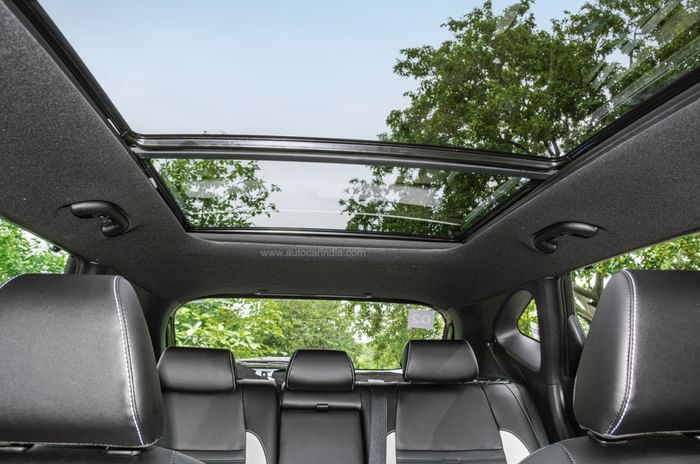
Other features of note on higher-spec variants are the 360-degree camera, a blind-spot monitor, a heads-up display, auto headlamps and wipers, a Bose audio system, powered driver’s seat, leatherette upholstery, ventilated front seats, an onboard air purifier, wireless phone charger and much more. Six airbags, disc brakes all around, ESP, hill-hold assist and a TPMS are standard fit on all variants of the Seltos, and the higher variants also get front and rear parking sensors.
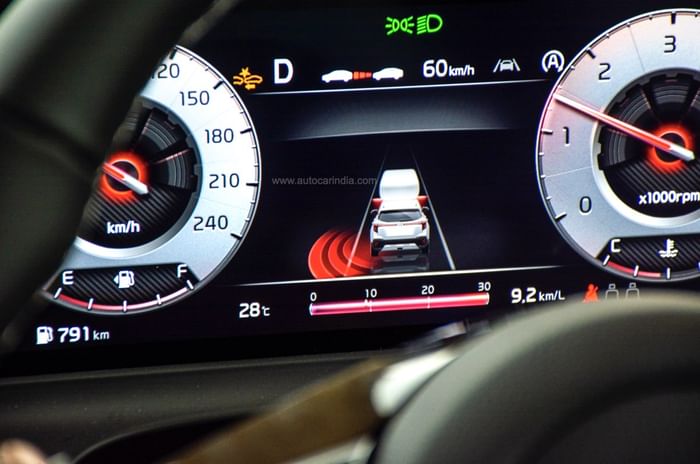
A highlight of the Seltos’ safety suite, however, is the ADAS. Using a combination of five cameras and three radar sensors, the Seltos facelift packs in 17 ADAS functions like forward collision warning assist, auto emergency braking, blind-spot collision warning, lane-keep assist, adaptive cruise control and more. While we only got a brief taste of these features, they worked just fine on the well-marked roads in and around Nagpur. The only caveat is that you’ll have to get used to the beeps and warnings the system keeps throwing at you on our chaotic roads. However, the ADAS features can be switched off should you wish to do so.
Kia Seltos facelift engines, gearboxes and performance
Like on the exterior, interior and features front, Kia has also made changes under the hood of the Seltos. It continues to come with the 1.5 petrol and diesel engines as before, but now there’s a new turbo-petrol engine option. Replacing the older 1.4 T-GDi motor is a new larger, more powerful 1.5-litre unit that currently does duty in the Kia Carens, and the Hyundai Verna and Alcazar.
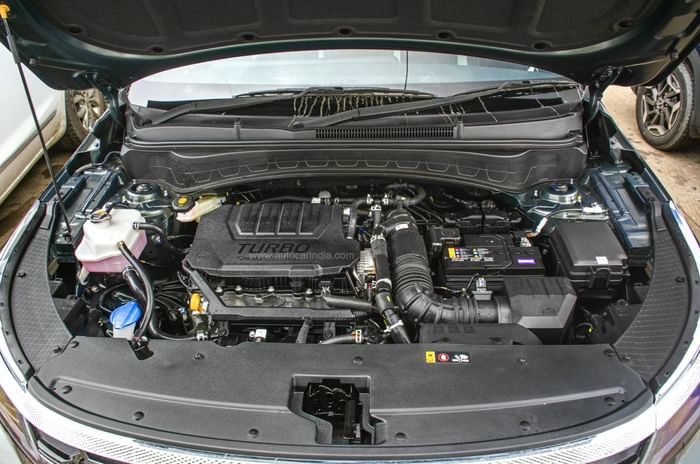
In terms of output, this new turbo-petrol mill, at 160hp and 253Nm, puts out 20hp and 11Nm more than the 1.4 it replaces. We got to sample this engine mated to a 7-speed DCT, but it can also be had with a 6-speed iMT. The new engine stands out for its refinement and strong performance; the numbers are class-leading after all. It’s quite linear in its power delivery, and, paired to the DCT, it feels genuinely quick in Sport mode. The way it rev-matches while downshifting is entertaining too. Though it does feel relatively smooth when driving flat out, it can get jerky at slower speeds when you’re on and off the throttle a lot. Still, this powertrain option will be the enthusiast’s pick of the bunch.
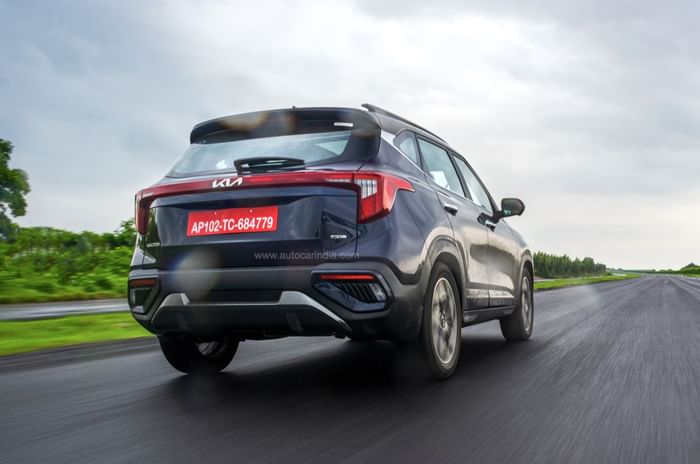
Along with the turbo-petrol DCT, we also drove the tried-and-tested 1.5 diesel with the 6-speed torque converter (there’s also a 6-speed iMT on offer). Output stands at 116hp and 250Nm, but it isn’t the figures that’ll impress you, it’s this engine’s refinement. The engine has been updated to BS6 Phase II standards, and as such, it now puts out 1hp more, but you can barely tell any difference in the way it performs. Sure, it doesn’t have the punch of the turbo-petrol, but in some instances, this powertrain – with its torque converter auto – feels smoother than the DCT. It also isn’t as responsive, but that shouldn’t be a deal breaker as this one is meant for those long highway cruises where refinement and fuel efficiency are paramount, and that’s exactly where this diesel-auto powertrain shines.
Along with the ones we drove, the Seltos also comes with a 115hp, 1.5-litre naturally aspirated petrol engine option that can be had with a 6-speed manual or a CVT automatic. We didn’t get a chance to test this engine, along with the Turbo-iMT and the diesel-manual configurations, but we hope we’ll able to sample these soon, and tell you what they’re like.
Kia Seltos facelift ride and handling
There are some notable changes with regard to ride and handling. Firstly, the GT Line variants now ride on larger 18-inch alloys, and Kia says they have made changes to the suspension setup as well. The Seltos facelift gets stiffened front damping to improve handling and softer rear damping for better ride comfort, the manufacturer states.
And, out on the road, you do feel that difference. Despite the larger wheel size, the facelift rides just as well, if not better than the older model. It feels composed at all speeds, and while it did feel a bit jittery and stiff at slow speeds, we tested the car with only the driver on board. And as such it should feel more compliant with more passengers and luggage on board. It also deals with road imperfections with ease and rarely feels unsettled going over bumps.
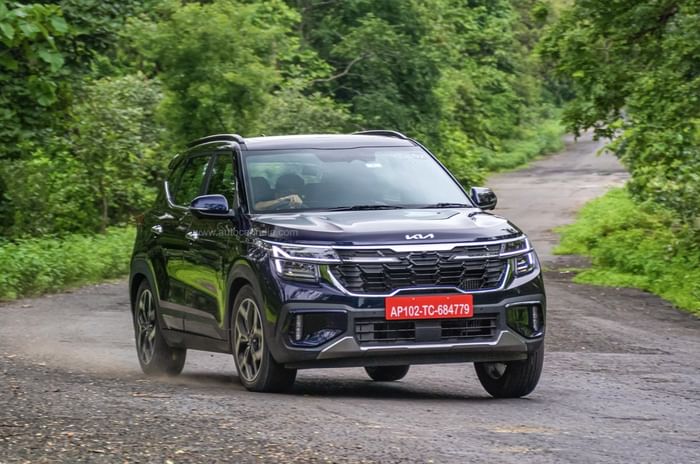
The majority of our drive was on the highway with barely any corners, so we’ll reserve our full judgment on the way the Seltos facelift handles till we do a full-fledged road test. Still, in our limited time with the SUV, it felt balanced around bends. Body movements are kept in check and the steering also has decent weight in Sport mode, but it lacks feedback. The brakes, meanwhile, are progressive, have good stopping power and decent pedal feel.
Kia Seltos facelift price and verdict
The Kia Seltos facelift starts at Rs 10.89 lakh for the base 1.5 petrol HTE variant and goes up to Rs 19.99 lakh for the range-topping X-Line variants (ex-showroom, India). When compared to rivals at the top-end, the Seltos is on par with the Maruti Grand Vitara and Toyota Hyryder, but it is more expensive than the MG Astor, Skoda Kushaq, Volkswagen Taigun and its Hyundai cousin, the Creta. However, after factoring in all the new tech, looks and the new engine it packs in, the Seltos still comes across as a good deal.
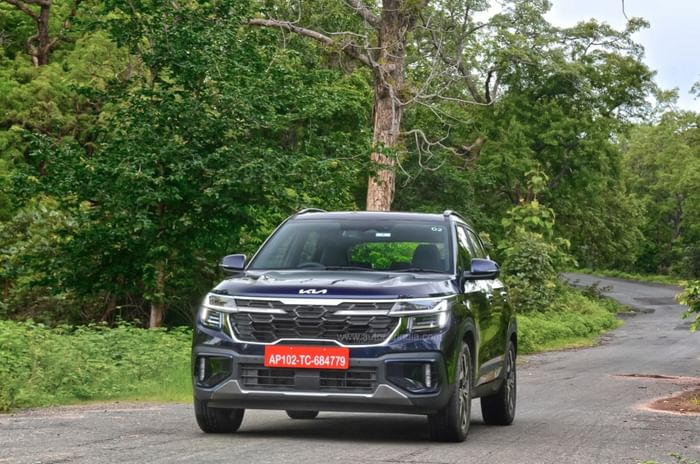
Overall, the Kia Seltos is a hard product to fault. The company hasn’t made any huge changes to the Seltos as it didn’t warrant one, but all the small increments they’ve made to the interior, exterior, features and powertrain fronts make it feel like a more premium, well-rounded package than before. It continues to offer a wide range of powertrains and is one of only two SUVs in its segment to offer a diesel option. Choosing the right variant for you can get confusing, and the higher variants are on the pricey end of the segment, considering they don’t pack in the expensive hybrid tech. But once you’ve navigated your way around that labyrinth, you’ll find tremendous value in the Seltos, providing you pick the right one for your use case.
Also See:
Kia Seltos facelift video review
Tech Specs 
Copyright (c) Autocar India. All rights reserved.






 Engine
Engine Transmission
Transmission Efficiency
Efficiency Body
Body Suspension
Suspension Brakes
Brakes Dimensions
Dimensions
Comments
Member Login
Personal Details
No comments yet. Be the first to comment.